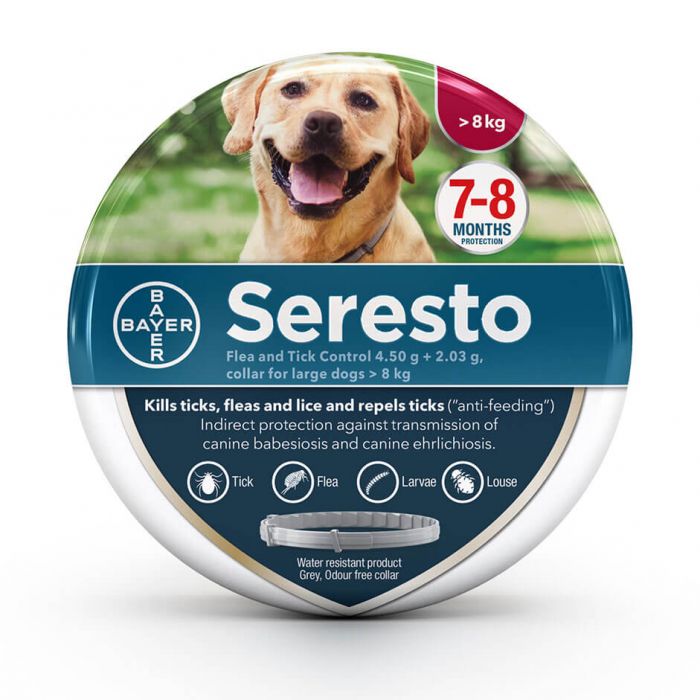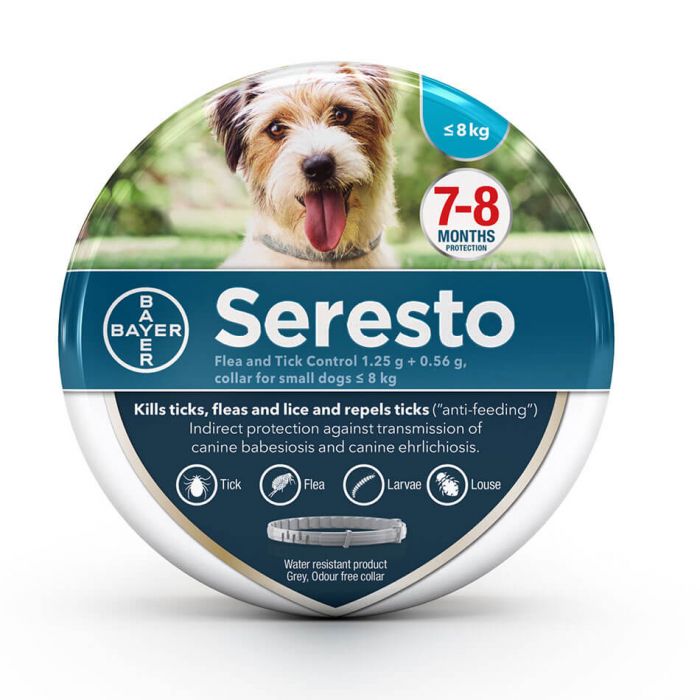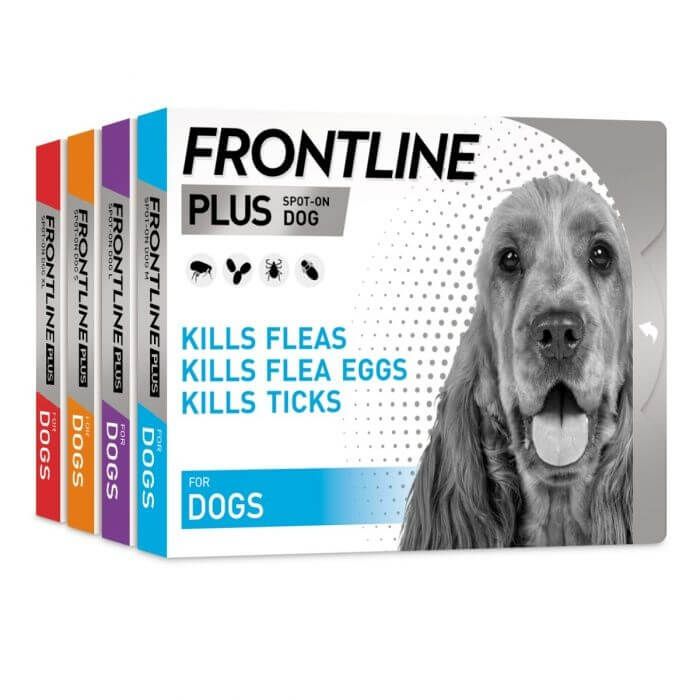
For all cat and dog owners, the prospect of dealing with fleas is an unpleasant one. But our pets can pick up these pesky parasites from all sorts of places, whether that be from parks, gardens, boarding kennels, vet visits and other homes. This means that no matter how clean your house is, you could still find yourself dealing with a flea infestation. But don’t worry, in this blog we’ll explain how to effectively eradicate fleas from your home; this requires you to address each stage of the flea life cycle, understand where fleas live, and of course treat your pet themselves.
The Flea Life Cycle
In order to effectively deal with a flea infestation, it’s essential to understand the flea life cycle.
After first feeding on a host (your pet), female fleas start laying up to 40 eggs a day. So once your pet has become a host, there’s not much time until a flea infestation starts to take shape.
These flea eggs fall off your pet and into the environment around them, before hatching into larvae. Flea larvae live in areas like pet bedding, carpets, furniture and between floorboards, feeding on predigested blood (known as flea dirt) and other organic debris.
Flea larvae will develop into pupae, protected inside cocoons until the conditions are right for them to hatch into adult fleas. Once adult fleas emerge, they must quickly find a host to feed on or they will die. That’s why they won’t come out of the pupae stage until environmental factors such as heat and carbon dioxide indicate that there is a host nearby. Fleas can stay in the pupae life stage for as long as a year if necessary.
For a more detailed explanation of the flea life cycle and how this affects the approach to treatment, read our dedicated blog.
Getting Rid of Fleas Takes a Multi-faceted Approach
Because fleas exist in these four different forms, getting rid of them – and making sure they don’t return – is tricky. Fleas in the pupae stage for example are protected against chemicals so adult flea treatment is ineffective against them.
For this reason, you need to address all the different lifestages of a flea in order to completely get rid of them.
How to Get Rid of Adult Fleas
As well as being used as a preventative measure, cat and dog flea treatments can be used to kill existing adult fleas.
Flea Collars
A good-quality flea collar such as Seresto releases its active ingredients at a slow and steady rate, killing adult fleas. It also repels ticks, making it particularly useful for cats and dogs that go off exploring when out on walks.
Seresto flea collars can provide up to eight months protection. This makes them ideal if you don’t want to schedule in regular treatment, particularly if your pet resists spot-on treatments or tablets.
Certain collars may not be suitable for pregnant animals or animals with other health issues, so make sure you check the guidelines of each individual product before use.



Flea Tablets
Like collars, flea tablets for dogs and cats target adult fleas. Flea tablets can be given mixed in with your pet’s usual food, or with the help of treats.
Capstar is a non-prescription flea tablet that works within 30 minutes of being administered, killing the adult fleas on your pet. You can give a dose of Capstar up to once a day, so depending on the severity of your pet’s infestation, it’s safe to treat them again the very next day if necessary.

Spot-on Flea Treatment
Spot-on products are applied topically to the back of your pet’s neck. When a flea bites a pet that has been treated, they’ll be killed, usually within 24 hours.
Both flea collars and many spot-on treatments are very effective against adult fleas, but these only make up around 5% of the whole flea population. We also need to address the eggs, larvae and pupae.
Some spot-on treatments have a dual protection element. These often have “combo” or “plus” in the name. They offer a combination of ingredients which do two things:
- Kill adult fleas
- Prevent eggs from hatching/affect larvae development
The double-ingredient formula upsets the life cycle of fleas, stopping the eggs from hatching, preventing them from developing into fleas and taking up residence in your home.
Our top spot-on flea products include: Advantage | Fipnil Plus | Frontline Plus | Vectra 3D | Vectra Felis | Effipro Duo | Beaphar


Some spot-on treatments take effect once the flea bites the treated pet, while others kill fleas on contact. If fleas were present in your home before you treated your pet, they are likely to have already laid plenty of eggs, which will now be embedded in the soft furnishings of your home. These eggs will not be affected by your pet’s flea treatment, and will continue to develop normally.
How to Get Rid of Flea Eggs and Larvae
Around 95% of the flea population live in the home environment. This includes the flea eggs, larvae and pupae.
Vacuuming and Hot Washes
Thoroughly vacuuming your home and washing all soft furnishings will help to get rid of most flea eggs, larvae and pupae. Use a hot temperature for your washes, and don’t forget to include bedding, sofa cushions, dog toys, curtains, rugs and any other soft furnishings. As well as carpets, vacuum all upholstery, mattresses, floorboards, skirting boards and any other cracks or tight spaces. Seal and dispose of your vacuum bags after each cleaning session just in case.
No matter how thorough you are though, it’s near impossible to get rid of all flea pupae through vacuuming and washing alone. Even just one missed flea can set off another infestation, so it’s essential to get rid of them all using the steps below.
Encourage the Fleas to Emerge
You can encourage pupae to emerge from their cocoons by using a humidifier and increasing the temperature in your home. Vacuuming itself also creates vibrations which cocooned fleas may mistake for signs that there’s a host nearby, encouraging them to emerge.
Flea Spray for the Home
Once they have emerged, the new adult fleas can be killed with household flea sprays and foggers. It’s important to do this quickly, so that the newly emerged fleas don’t have time to find their host and start the cycle again by laying more eggs.
Luckily, household flea sprays kill adult fleas on contact, so they’re great for instant eradication.
Indorex Flea Spray for example, will ensure that the environment continues to be lethal to fleas for up to 2 months after spraying. It will also prevent the development of any eggs or larvae that are still present for up to 12 months.
Our top flea sprays for the home include: Indorex Defence | StayKil | Frontline Homegard | Beaphar FLEAtec

When to Speak to Your Vet
If your cat or dog still has fleas after treatment, or you’re still finding them in your home, speak to your vet for advice. They may be able to recommend other flea and tick treatments that are only available on prescription. If your pet appears to be scratching excessively despite flea treatments, they may have an allergy and require treatment – speak to your vet in this instance too.
Wrapping Up
A combination of pet treatments, regular vacuuming, and household sprays addresses every stage of the flea life cycle. This tackles the problem from all angles, and is the best way to ensure that no fleas survive after an infestation. It can take a few weeks to fully rid yourself of a flea infestation, however, so prevention is always better than cure. Even if you don’t have a current flea problem, it’s important to give your cat or dog a regular flea treatment to keep it that way.
Shop our full range of flea treatments here.

This blog was checked by Karin Volker, MRCVS
